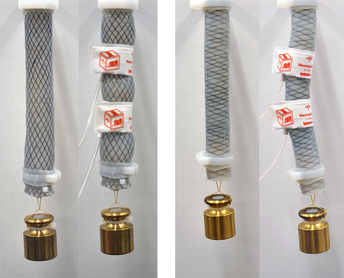|
I use simple physical models extensively in my research. Building physical models is a fun, creative process that forces the builder to think critically about how biological systems work mechanically.
In my work, a huge portion of the "observation" portion of the scientific method occurs during physical model building. Below are some tips and resources for building models of soft biological cells and tissues. |
|
Tube Method #1:
Here's one method for making flexible tubes out of silicone rubber. This is from Smooth-On's 'How-to' site, which has lots of useful tutorials. I used this method to make the muscle fiber models in Sleboda and Roberts 2020. Instead of the "powermesh" fabric shown at 1:50, I wrapped the tubes in layers of sewing thread so that I could vary the pitch of the reinforcing fibers. YouTube: "Medical Simulation: Making Suturable Vessels" by Smooth-On |
|
|
Tube method #2:
This is a really interesting looking extrusion-based method. I haven't tried this one personally, but it looks like it would produce tubes with more uniform thickness than method #1. YouTube: "Home made silicone fuel line?" by EngineerNick |
|
|
Constrictor knot:
This is a very useful knot for making air and water-tight connections. A couple of these make a light-weight and unobtrusive replacement to a zip-tie or hose clamp. YouTube: "Super Useful Knot - How To Tie A Constrictor Knot" by WhyKnot |
|
|
Soft Robotics Toolkit:
This is one of the primary forums dedicated to soft robotics. It's a great place to browse different types of soft actuators and to see how they're built. |


